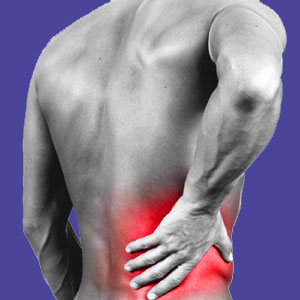
Do you have a chronic or recurrent lower back problem? You are not alone. Most of the adult population in the developed world suffers severe lower back pain at some point in life and a large number of these people experience persistent pain syndromes in the lumbar spinal region. Why is lower back pain so commonplace?
Is lower back pain indicative of a spinal problem? In some cases, the answer is surely yes, but in others, there is no evidence of structural pathology being responsible for causing the pain. Maybe muscular concerns are the source of symptoms? Again, the back muscles may be responsible for creating pain in some patients, but far from all. The reality is that most cases of lower back pain can not be logically linked to any definitive causative mechanism.
This discussion provides some important insights for patients who are tormented by chronic or recurring lower back symptoms. If you want to understand why your pain has not resolved despite treatment, then this is the right article for you.
Types of Lower Back Problem
“Problem” is an ambiguous word and does not qualify as any type of medical diagnosis. However, it should also be noted that most structural medical diagnoses involving the lower spine are not “problems”. Many are simply normal anatomical changes associated with age and activity.
Likewise, many patients are told that they are suffering from muscular problems in the lower back, such a RSI, imbalances and idiopathic conditions like FMS. Are the muscles the real cause or are they just a place where symptoms are located?
You might have a pain problem, but this does not inherently mean that you have a problem with your lower back. It is important to realize the distinction and ascertain whether the cause of your suffering indeed resides in the back or is a created elsewhere. There are systemic, disease-related and mindbody causes of pain that have nothing at all to do with the lower back, except that they express pain there…
Issues with Lumbar Back Pain Problems
We take serious issue with the very concept that most people who suffer back pain in the lumbar area have some problem with their actual lower back. Statistics show that treatments for virtually all medical diagnoses in the lower back fail, often quite miserably. The most logical explanation for this failure is simple misdiagnosis, which we already know to be a monumental problem in the modern healthcare system.
It is surely possible to have some structural defect or injury in the lower back. In some cases, pain is a direct result of some verifiable pathology. However, in most patients, pain is misattributed to structural scapegoats, rather than its true causation. There is no lower back problem, only a problem with the level of diagnostic competency of the care provider. In essence, the patient’s biggest problem is their doctor, who leads them further down the wrong path when it comes to treatment. The cause of this is usually financial motivation interfering with proper diagnostic processing.
We find that the vast majority of people with chronic lower back pain have been misdiagnosed, often several times. Of these, only a tiny fraction actually demonstrates spinal or muscular pathology. A few are suffering from some disease or systemic issue that remains undetected, usually due to poor doctoring. The rest are suffering from idiopathic back pain, often of an ischemic nature related to the mindbody interactions.
Solution for your Lower Back Problem
When it comes to ending lower back pain for good, patients need to stop going from doctor to doctor and treatment to treatment and refocus their attention on their diagnosis. In virtually all cases of unresponsive pain, this is where the error resides. If a correct diagnosis can be established, then treatment should be successful. If therapy after therapy fails, then these care regimens are most likely not treating the correct source of symptoms, but instead are seeking to act on an innocent, incidental structural change in the anatomy, such as degeneration related to age and activity. This is why so many patients undergo “successful” surgery on the lumbar spine, but still suffer terrible pain postoperatively.
Seek a new opinion from a more enlightened and objective care provider. More importantly, get more involved in your own care and research why lower back pain has become such an epidemic issue, despite little evidence of it in the historical medical record. Humans have not changed much anatomically. However, the medical side of business surely has changed and this is the reason why so few lower back pain suffers enjoy cures. Get to the heart of why you really have pain and pain can be defeated forever. Keep blaming pain on innocent structural change and continue to suffer. It’s a simple as that; like it or not.





